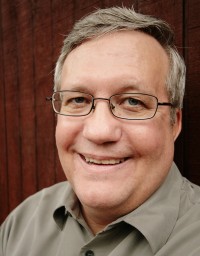Life after life after death
The standard view of life after death has long focused on a disembodied soul that, immediately pursuant to the expiration of the body, goes either to heaven or to hell. I remember the sermon preached at my father’s funeral some years ago. It was classic Platonism—Dad’s soul had now escaped the entrapping shell of his cancer-ravaged body and was free in the beautiful communion of heaven.
Christian scholars have long questioned this easy dualism of body and soul. Karl Barth, for instance, insisted that the more biblical view calls us to see ourselves as both “ensouled bodies” and “embodied souls.” But the standard view has remained strong, especially in everyday church circles. That may be changing, as a passel of recent books indicate.
Read our latest issue or browse back issues.
Premier among them is N. T. Wright’s Surprised by Hope: Rethinking Heaven, the Resurrection, and the Mission of the Church. Rob Bell’s bestseller Love Wins follows Wright in putting the post-mortem emphasis on resurrected bodies in the context of a new heaven and a new earth. More recently Howard Snyder and Joel Scandrett, in Salvation Means Creation Healed, make an extended argument that salvation focuses not just on souls and not just on people, but presents the hope of a transformed and new earth. Meanwhile, biblical scholar Richard Middleton is at work on a book that will closely examine the major biblical texts and argue for the eschatological hope of a new heaven and a new earth.
This sea change in thinking is largely because scholars have reappraised the New Testament with a keener eye to its Hebraic roots. The body-soul dualism of Greek thought always fit uneasily at best with the Old Testament, which contains only glimmers of an afterlife and remains throughout very this-worldly. Rereading the New Testament in a more Hebraic light has brought to the fore several texts that point to an eschatology that is focused not on disembodied souls but on resurrected bodies and a transformed earth.
Scholars in the midst of this reappraisal build on Old Testament texts such as Isaiah 65:17–25, where God declares, “For I am about to create new heavens and a new earth,” a new earth in which weeping will be heard no more, where there will be no hunger or infant death, and where the wolf and lamb will feed together side by side. They consider also Micah 4:1–4, an eschatological text that looks to the day when nations will “learn war” no more, and so they “shall beat their swords into plowshares.”
They then turn to New Testament texts such as Romans 8, in which Paul envisions a creation “groaning” in wait of its transformation and promises: “He who raised Christ from the dead will give life to your mortal bodies also through his Spirit that dwells in you” (v. 11). Elsewhere Paul declares that the God who raised Jesus will also raise us by his power (1 Cor. 6:13–15) and mulls at length on the nature of our resurrection bodies (1 Cor. 15).
The eschatological hope of reembodiment and a renewed earth doesn’t belong to Paul alone. Second Peter 3:13 reads that “in accordance with his [God’s] promise, we wait for new heavens and a new earth, where righteousness is at home.” And of course there are chapters 21 and 22 of Revelation, in which the seer beholds “a new heaven and a new earth; for the first heaven and the first earth had passed away” (21:1) and focuses on a resplendent New Jerusalem, into which the nations will proceed by the light of the Lamb and offer up all their glories (22:23–24).
Such texts suggest that the new view is not so new but is indeed a recovery of an old and more decidedly biblical view of death and the afterlife. The “new” view changes the complexion of funeral sermons: less attention should rest on where the departed has gone immediately and more attention on the new heavens and new earth we all can ultimately look forward to, in resurrected bodies. The new view also puts more value on the earth, which will not after all simply be destroyed and pass away but will itself be renewed.
The new view also comports well with advances in neurological science, which by way of MRIs and other techniques has observed evidence of religious experience in the brain. Such evidence suggests that the (physical) brain and the soul are not strictly separated.
Of course, the new view raises a number of questions. Probably the most pressing pastoral question is about the nature of the soul and what happens to us, to my “I” and your “you,” immediately after death. Some expect a kind of soul sleep until the day of resurrection. Others point to eternity’s comprehension of all time—past, present and future—so that the dead enter into an eternity where the resurrection future has already occurred.
However such quandaries are resolved, the new view decidedly shifts the emphasis to the eschatological Resurrection Day of corporate and final judgment. As Wright puts it, the biblical picture is ultimately focused not on individual life directly after death but on “life after life after death.” The new view can certainly preach. It will be interesting to see if this recent cascade of books, aimed at the church even more than the academy, will bring changes in attitudes and hopes to the daily lives of congregations.







